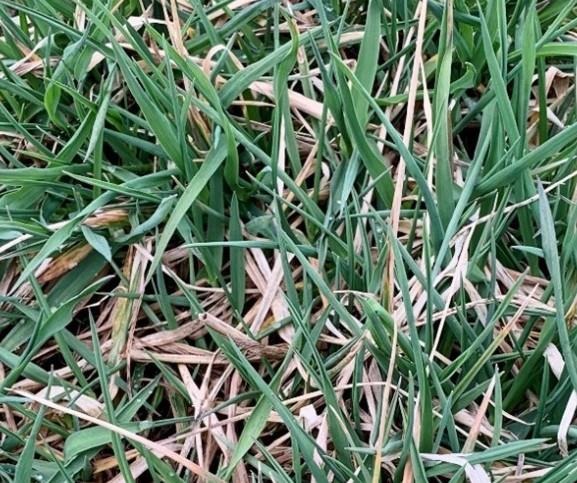By Andrew Frankenfield and John Tooker
To determine whether this pest species is active in your timothy fields, scout fields for signs of damage. Mite feeding causes leaf blades to roll up. Look for leaf blades that are rolled up tightly, rather than leaf blades that are flat and normally expanded. The mites are very small, so to see them you will need a good hand lens or other magnifying device. Pick rolled leaves from around the field and inspect them carefully; mites tend to occur in grooves between the leaf veins. Treatment is recommended if 25% of tillers show the leaf curling within several weeks of green-up. Chemical options are very limited, but Sevin XLR Plus is has a supplemental label in PA at 3 pints per acre allowing its use against mites on timothy. Carrier rates of 20-25 gallons per acre are needed to get the material into the leaf rolls.

Curling timothy tillers due to Cereal Rust Mite feeding. Photo: A. Frankenfield, Penn State Extension
The mites cause two negative impacts, yield loss and quality. Yield losses have been estimated at 30-70% and hay quality is reduced due to dead, brown leaves. Timely application and spray coverage is important for effective control. Typically, first year fields are not as likely to have high populations of mites as older fields. If your fields meet the threshold of 25% of leaves being curled, then treatment is recommended to prevent more leaves from rolling, which can protect mites from receiving the pesticide.
Source : psu.edu